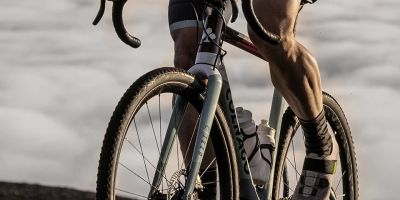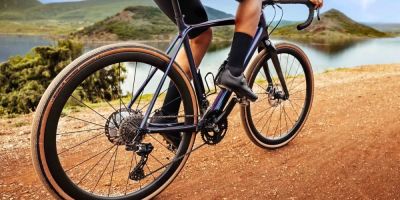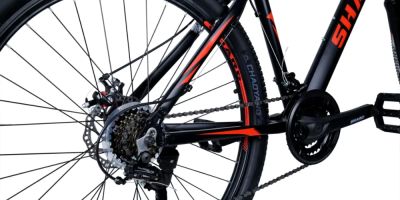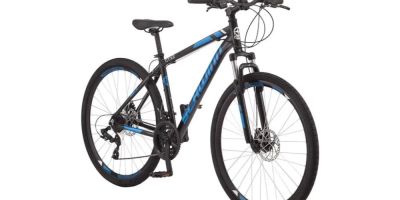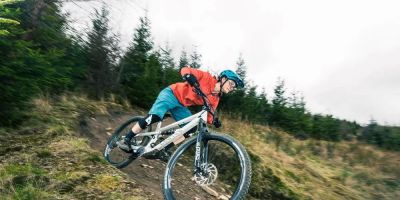Why Choose a Fat Tire Bike for Snow and Sand?
When it comes to cycling in extreme conditions like snow and sand, regular bikes simply won't cut it. Their narrow tires get bogged down, making it difficult to ride on soft or slippery surfaces. This is where fat tire bikes come into play. With their wide tires designed to distribute weight more evenly, fat bikes excel in snow, sand, and other challenging terrains.
Personally, I’ve had my fair share of experience cycling through snowy trails and sandy beaches, and let me tell you, a fat tire bike completely changed the game for me. Unlike my regular mountain bike, which I had to push and struggle with, my fat bike glides through snow and sand like a breeze, making it a fun and effortless ride. But what makes a fat tire bike truly great for these conditions? Let’s dive into the features and options you need to consider when choosing the best fat tire bike for snow and sand.
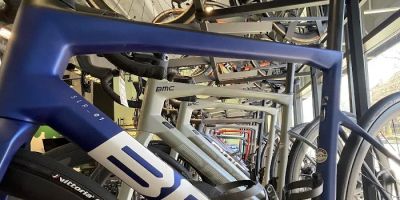
Conte's Bike Shop
3449 Wilson Blvd, Arlington, VA 22201, USA
Key Features of Fat Tire Bikes for Snow and Sand
Fat tire bikes are built to handle tough conditions, but there are specific features that make them stand out even more in snow and sand. Understanding these features can help you choose the right bike that meets your needs. Here's what you should look out for:

Bicycle Barn LLC
839 Reading Rd, East Earl, PA 17519, USA
1. Tire Width
The most obvious feature of a fat tire bike is its wide tires. These tires typically range from 3.7 inches to 5 inches or more in width. The wider the tire, the better it is at distributing your weight over a larger surface area, which prevents you from sinking into the snow or sand. In snow, this helps keep you on top of the powder rather than getting stuck. On the beach, it lets you glide effortlessly over loose sand, where a regular tire would sink in.
2. Tire Pressure
Another key aspect is tire pressure. Fat tire bikes allow you to run lower tire pressures than traditional bikes. Lower pressure means more surface contact, which is perfect for snow and sand. By reducing tire pressure, the tires spread out more and increase traction. But be careful—running too low of a pressure can cause flats, so it’s essential to find the right balance for your terrain.
3. Frame Material
Fat tire bikes come in a variety of materials, including aluminum, steel, and carbon fiber. Each material offers its own advantages, such as weight savings or durability. For snow and sand riding, I prefer a bike with a steel frame because of its superior shock-absorbing properties, which is perfect for handling rougher terrain. However, if you’re looking for something lighter, aluminum frames are also a good option. Carbon fiber is great for high-end models, offering lightweight yet strong performance, but they tend to be more expensive.
4. Gear System
While fat tire bikes are great for off-road conditions, you still need a reliable gear system to tackle hills, deep snow, or sandy inclines. Look for a bike with a wide range of gears, such as a 1x11 or 2x10 setup, so you can easily shift between low gears for steep climbs and high gears for flat terrain. A good gear system ensures a smoother ride, especially when the ground isn’t forgiving.
5. Braking System
Brakes are another crucial factor to consider when choosing a fat tire bike for snow and sand. In these conditions, you need powerful and responsive brakes. Disc brakes, especially hydraulic disc brakes, are highly recommended for fat tire bikes because they offer excellent stopping power in wet or icy conditions. Mechanical disc brakes are also a good option, though they might not perform as well in extreme cold.
Top Fat Tire Bikes for Snow and Sand in 2025
Now that you understand the key features to look for, let's explore some of the best fat tire bikes on the market in 2025. These bikes are built to handle tough terrains and provide an exceptional riding experience in both snow and sand.
1. Trek Farley 7
The Trek Farley 7 is one of my favorite fat tire bikes. It has a lightweight aluminum frame and wide 4.5-inch tires that offer exceptional stability in both snow and sand. The Farley 7 is equipped with a 1x11 drivetrain, making it easy to switch between gears for various terrains. The hydraulic disc brakes provide reliable stopping power, even in wet and icy conditions. This bike is perfect for those who want a high-performance fat tire bike without compromising comfort or durability.
2. Salsa Mukluk Carbon
If you’re looking for a top-of-the-line fat tire bike, the Salsa Mukluk Carbon is a fantastic option. Its carbon fiber frame makes it one of the lightest fat bikes out there, yet it doesn’t skimp on durability. With 4.8-inch tires and a high-quality drivetrain, this bike can handle the most demanding snow and sand rides. The Mukluk Carbon also features a sleek design, making it a popular choice for cyclists who value both performance and aesthetics.
3. Surly Ice Cream Truck
The Surly Ice Cream Truck is a beast of a fat bike. With 4.8-inch tires and a steel frame, it’s built to tackle the roughest terrains, including deep snow and soft sand. Its low-pressure tires provide excellent floatation, and the bike’s rugged design ensures it can handle the toughest conditions. Although it’s a bit heavier than some of the other options, the Ice Cream Truck is incredibly durable and offers a smooth, stable ride in challenging environments.
4. Borealis Flume
The Borealis Flume is another solid option for snow and sand cycling. Its 4.8-inch tires and durable aluminum frame provide excellent flotation and stability. The Flume is equipped with a 1x11 drivetrain and hydraulic disc brakes, making it a reliable choice for both winter and summer riding. If you're looking for a fat tire bike that offers great value for money without sacrificing performance, the Borealis Flume is worth considering.
5. Rocky Mountain Blizzard
The Rocky Mountain Blizzard is a fat tire bike that offers a great combination of performance and affordability. Its 4.7-inch tires are perfect for tackling soft, sandy trails or deep snow. The aluminum frame is both light and sturdy, and the bike’s drivetrain is built for ease of shifting in tough conditions. With its rugged design and reasonable price point, the Blizzard is a great choice for cyclists looking for an all-around fat bike for winter and summer adventures.
Tips for Riding Fat Tire Bikes in Snow and Sand
Riding a fat tire bike in snow and sand can be a lot of fun, but it comes with its own set of challenges. Here are some tips to help you get the most out of your fat bike riding experience:
1. Adjust Your Tire Pressure
As mentioned earlier, tire pressure plays a crucial role in fat tire biking. For snow, you may want to decrease your tire pressure slightly to increase traction, while for sand, you’ll need to find the optimal balance between too soft and too firm. Experiment with different pressures to see what works best for you and the terrain you're riding on.
2. Ride at a Steady Pace
When cycling through snow or sand, it’s important to maintain a steady, consistent pace. Pedaling too quickly can cause your bike to sink or become bogged down. Instead, focus on smooth, continuous pedaling that allows the bike to glide over the terrain.
3. Choose the Right Trail
Not all snow and sand trails are created equal. Look for trails that are well-packed or compact, as these are easier to ride on than soft, loose surfaces. If you're riding on the beach, try to stick to packed sand near the water's edge rather than venturing into dry, loose sand.
4. Keep Your Bike Clean and Well-Maintained
Snow, salt, and sand can quickly damage your bike’s components, so it's important to clean and maintain your fat tire bike regularly. After each ride, make sure to clean off any dirt or salt, especially from the chain and brakes. Lubricating the chain is essential to keep it running smoothly in cold and sandy conditions.

